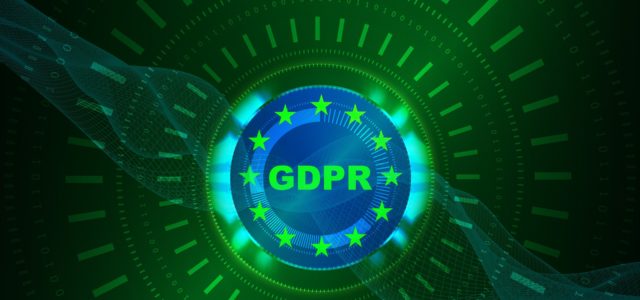Back in 2012, I attended an IT Governance seminar where Jane Treadwell, former CIO for the Government of Victoria (in Australia) started her presentation with three key assertions:
- There are no IT projects – there are only business projects
- There is no IT versus business – IT is part of the business
- IT Governance by itself is misdirected
So my provocative title is more about the focus and management of projects than about banning IT.
Recently, I started a series of articles on business analysis, including:
- Quality of business analysis?
- IT systems as means not ends
- Enterprises as systems squared
- Trinity of systems
- Exploring business capability gaps
These articles were prompted by a range of issues which I have encountered, oftentimes as a result of dealing with “IT Projects” that should be “Business Projects”. In these articles, I have explored some aspects of the relationship between what I called the “trinity of systems”:
- Business systems (or organisations or enterprises)
- Information systems
- IT systems
My recent reading of “Systems Engineering: A 21st Century Systems Methodology” by Derek Hitchins has added some further understanding in this area and prompted the development of this article.
There are numerous definitions of systems – see Enterprise as System for further elaboration. For the purposes of this article, the following elements are important:
- A system is a whole consisting of two or more interacting parts
- Each part can affect the behaviour of the whole
Distinctions
It is important to understand the implications of this definition, made clearer to me in reading systems engineering papers and books. Derek Hitchins explains it this way:
Similarly, it is not helpful to think of an automobile as a system; without the driver and passengers, it is an artifact, contrivance, or — if you like — an incomplete whole. By itself, it exhibits no purpose, it does nothing, and it is inactive, inert. Add the driver, spouse and children, perhaps, and we have a socio-technical system which travels, seeks out destinations, achieves goals, observes traffic regulations — most of the time — creates a comfortable environment with constantly changing scenery, steers, accelerates and decelerates, etc; none of which the car-as-an-artifact can do on its own. And which, come to that, precious little of which the driver could do as well on his/her own. Bring the two parts together and the whole exhibits properties, capabilities and behaviors … that are, by definition, emergent, since none can be attributed exclusively to either of the rationally separable parts — automobile or driver.
The same line of argument applies to IT systems:
- An IT system is an incomplete whole without the people who use the IT system, those who create and use information captured, stored, processed and managed by the IT system
- The IT system may well source information from other devices and process this information into a form more usable by those using the IT system, but the IT system, like the car, is an incomplete whole without people interacting with and using the system
This is also made clear by Peter Checkland in his development of the Soft Systems Methodology, where he makes clear that people are an inherent part of an information system, as it is only people who can apply meaning to the information within the system, and hence to the information and data managed within the IT system. As outlined in Trinity of Systems, people are an intrinsic part of the information systems that enterprises establish. It is really only the enterprise-as-system that is the whole, with the IT system being a critical and integral element, but only a part of the enterprise.
Implications
There are a number of critical implications that arise from this understanding:
- an IT system cannot be successfully created and implemented in isolation of the containing business system (enterprise)
- the use of an IT system must always be considered in the context of the containing business system
- the benefits of an IT system enabling and supporting the containing business system are largely realised by the business system
Isolation
In designing an IT system, account needs to be taken of how the IT system will be used. This requires the designer to conceive of the different ways in which the IT system might be used, and particularly to appreciate those ways which will be regarded as:
- more convenient
- more valuable
Prospective users are more likely to use the system if it is easy and convenient to use. This is part of what is considered through the lens of user experience.
Prospective users are more likely to use the system if it delivers value, either by better meeting their needs (effectiveness) and more easily meeting their needs (efficiency).
Use
Not only does the use of the IT system need to be considered in the context of the business function and objective it is supporting, but there is also a need to consider the “future” of the business function.
If the function does not deliver sufficient value, it may be targeted for change, possibly eliminating the need for the supporting IT system.
If the IT system substitutes for the business function, this will change the dynamics of the broader system of which the business function is part. Consideration will need to be given to the impacts on “other parts” within the broader business system or enterprise.
Benefits
Since the value of an IT system is derived through use of the system, the primary benefits of the system are realised by the business users of the IT system.
In the past, it was often assumed that the IT organisation unit should be accountable for realising the benefits of the IT system that they delivered. Now, it is more appropriately appreciated that the business users (and business owner) are the people who have the capacity to realise the benefits. This is directing greater attention to ensuring that business practices change such that optimum value is realised through use of the IT system.
Conclusion
Organisations that:
- bring a stronger business focus
- consider the business systems being enabled by the IT systems
- ensure the business owner and users make judgements about the value they can derive from the investment in establishing and maintaining and IT system
- hold the business owner accountable for the benefits of an IT system
are more successful in establishing, maintaining and using IT systems that deliver greater value to their enterprise.
Being clear that they are undertaking a business project is a helpful step towards doing this.
Article by channel:
Everything you need to know about Digital Transformation
The best articles, news and events direct to your inbox
Read more articles tagged: Featured, Operating Model







